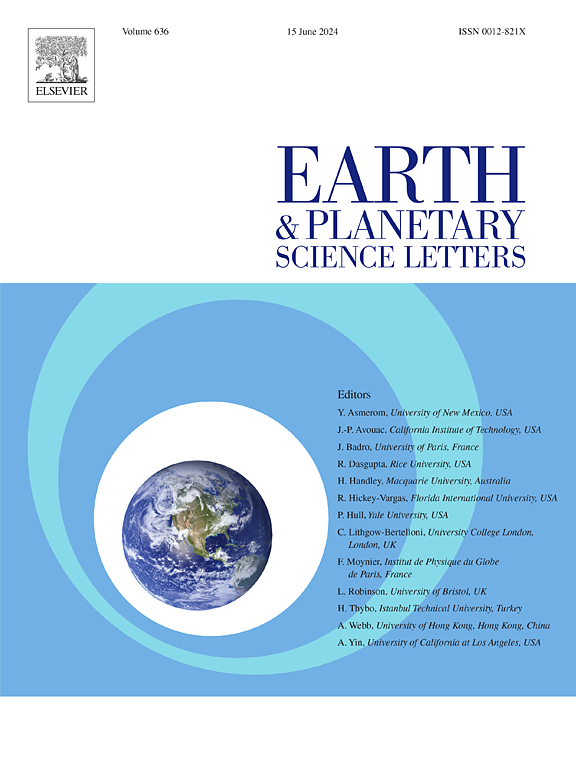Origin of moderately volatile elements in Earth inferred from mass-dependent Ge isotope variations among chondrites
IF 4.8
1区 地球科学
Q1 GEOCHEMISTRY & GEOPHYSICS
引用次数: 0
Abstract
The bulk silicate Earth (BSE) is depleted in moderately volatile elements, indicating Earth formed from a mixture of volatile-rich and -poor materials. To better constrain the origin and nature of Earth's volatile-rich building blocks, we determined the mass-dependent isotope compositions of Ge in carbonaceous (CC) and enstatite chondrites. We find that, similar to other moderately volatile elements, the Ge isotope variations among the chondrites reflect mixing between volatile-rich, isotopically heavy matrix and volatile-poor, isotopically light chondrules. The Ge isotope composition of the BSE is within the chondritic range and can be accounted for as a ∼2:1 mixture of CI and enstatite chondrite-derived Ge. This mixing ratio appears to be distinct from the ∼1:2 ratio inferred for Zn, reflecting the different geochemical behavior of Ge (siderophile) and Zn (lithophile), and suggesting the late-stage addition of volatile-rich CC materials to Earth. On dynamical grounds it has been argued that Earth accreted CC material through a few Moon-sized embryos, in which case the Ge isotope results imply that these objects were volatile-rich, presumably because they were either undifferentiated or accreted volatile-rich objects themselves before being accreted by Earth.
从球粒陨石中质量依赖的Ge同位素变化推断地球中中等挥发性元素的起源
大块硅酸盐土(BSE)中挥发性元素较少,表明地球是由挥发性丰富和挥发性较差的物质混合而成的。为了更好地约束地球挥发物丰富的组成块的起源和性质,我们确定了碳质(CC)和顽辉石球粒陨石中Ge的质量依赖同位素组成。与其他中等挥发性元素相似,球粒陨石中Ge同位素的变化反映了富挥发、重同位素的基质与贫挥发、轻同位素的球粒的混合。BSE的Ge同位素组成在球粒陨石范围内,可以解释为CI和顽辉石球粒陨石衍生的Ge的~ 2:1混合物。这一混合比例似乎与Zn推断的~ 1:2比例不同,反映了Ge(亲铁)和Zn(亲石)的不同地球化学行为,表明富含挥发物的CC物质在地球后期加入。在动力学的基础上,有人认为地球通过几个月球大小的胚胎吸积了CC物质,在这种情况下,Ge同位素的结果暗示这些物体是富含挥发物的,大概是因为它们在被地球吸积之前要么是未分化的,要么是富含挥发物的。
本文章由计算机程序翻译,如有差异,请以英文原文为准。
求助全文
约1分钟内获得全文
求助全文
来源期刊

Earth and Planetary Science Letters
地学-地球化学与地球物理
CiteScore
10.30
自引率
5.70%
发文量
475
审稿时长
2.8 months
期刊介绍:
Earth and Planetary Science Letters (EPSL) is a leading journal for researchers across the entire Earth and planetary sciences community. It publishes concise, exciting, high-impact articles ("Letters") of broad interest. Its focus is on physical and chemical processes, the evolution and general properties of the Earth and planets - from their deep interiors to their atmospheres. EPSL also includes a Frontiers section, featuring invited high-profile synthesis articles by leading experts on timely topics to bring cutting-edge research to the wider community.
 求助内容:
求助内容: 应助结果提醒方式:
应助结果提醒方式:


